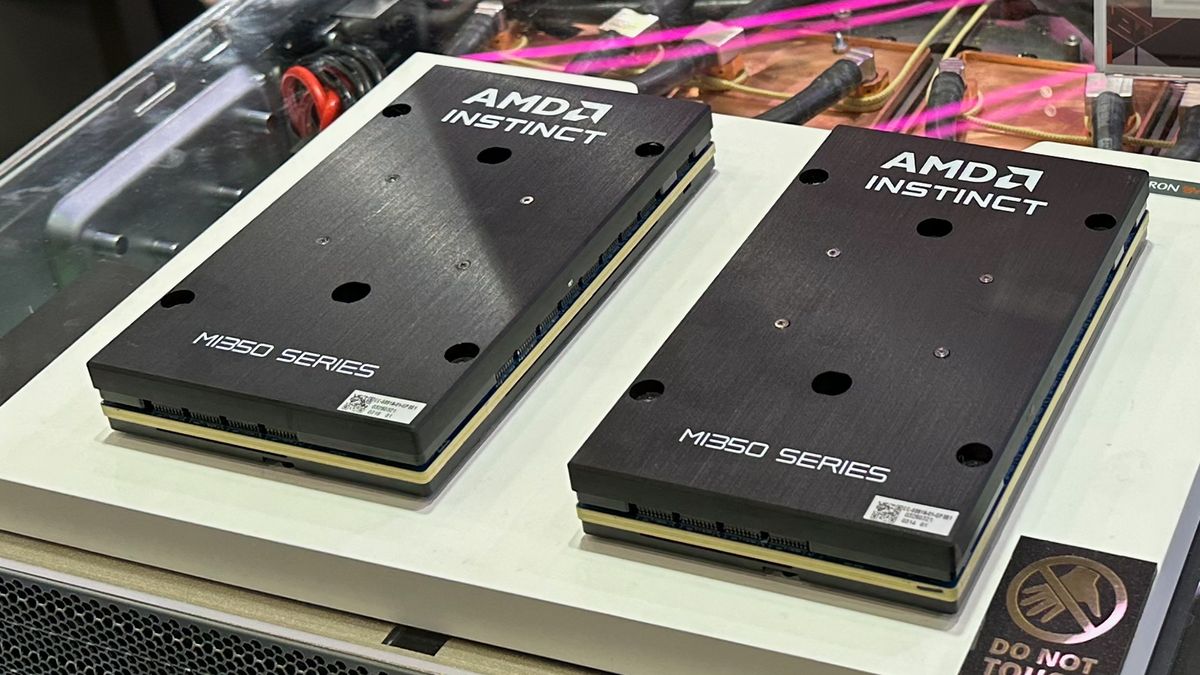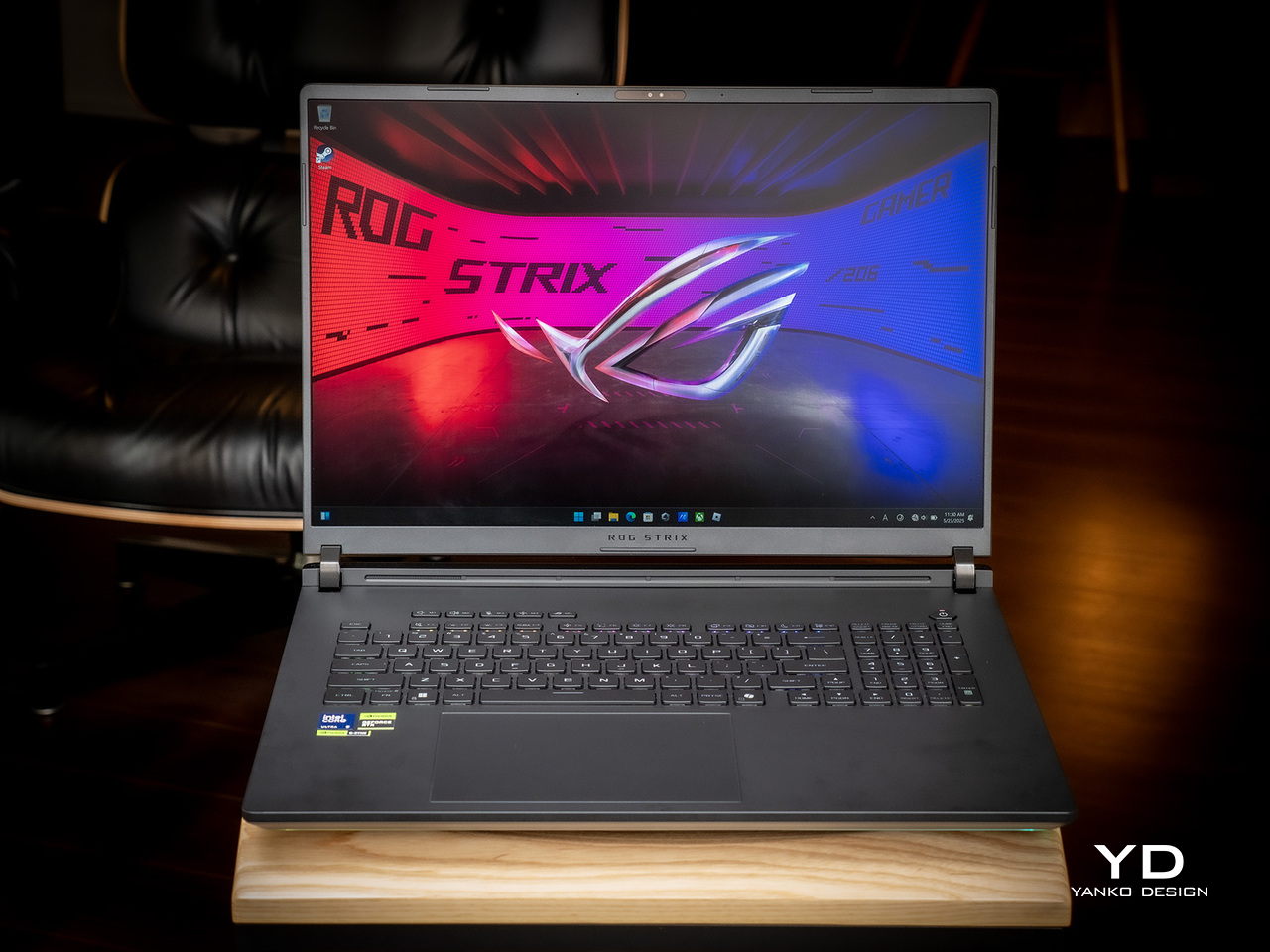Is Intel’s Arc Pro B60 the Dual GPU Innovation We’ve Been Waiting For?
Key Takeaways
Maxsun unveiled the new Intel Arc Pro B60 Dual GPU video card, featuring two 24GB Pro B60 GPUs.
It features a blower-style fan, ideal for building complex workstations with multiple cards.
Although the pricing isn’t made public yet, we expect it to be around which can be a competition-killer.
Remember the good old CrossFire days when you could hook up multiple AMD GPUs to achieve higher performance? Well, those days might be returning thanks to the new Intel Arc Pro B60 Dual GPU launched by Maxsun at Computex.
It PCIe features two 24GB GPUs in a single card, meaning you can get 48 GB of GPU memory. What’s incredible here is that the Arc Pro B60 only needs 8 PCIe lanes, unlike some high-end GPUs that need 16.
However, you’ll need an X16 motherboard/CPU combo that supports PCIe bifurcation. In that case, the entire x16 slot can be split into two x8 connections.
Interestingly, the Arc Pro B60 isn’t marketed as a gaming GPU – it’s meant primarily for workstations that require high computing power for tasks such as rendering, animations, moderate AI development, 3D modelling, etc.
This is why it features a unique blower-like fan instead of the typical open-air fan we see in gaming CPUs. Unlike open-air fans that spread the heat out inside the case, a blower-style fan works like a hairdryer by pushing the heat out from the inside of the case.
While the cooling efficiency of a blower fan might be lower on a single GPU, they turn out to be more effective in stacks, which is exactly what the Arc Pro B60 is meant for.
So, if you’re building a workstation with 3 Arc Pro B60s, a blower-style fan ensures all 6 GPUs can be cooled without overwhelming the entire setup, making it better for ‘stacking.’
Comeback of Multi-GPU Setups
Multi-GPU setups were quite the thing back in the day. We’re sure that a couple of die-hard builders in our team would serve up puppy eyes thinking about hooking up two 16GB GPUs to get more power.
However, despite the widespread belief that you would get double the performance, memory was only enhanced by 30-50%. Still, these CrossFire setups served the purpose, i.e., gamers could play resource-intensive games.
It’s worth noting that such dual-GPU setups faded away with the rapid development of newer GPUs. In short, single GPUs became powerful enough to overshadow dual GPUs. Eventually, a lot of applications and games stopped supporting CrossFire setups.
With the new Intel Arc Pro B60, dual GPUs might make a mini-comeback. They’re not returning to the gaming arena, but to data centers, workstations, and AI setups. NVIDIA hasn’t promoted this in a long time, pushing its expensive GPUs into the market instead.
This is also precisely where Intel wants to punch harder – the price point. Although we’re still waiting for the exact details on the Intel Arc Pro B60 dual GPU setup price, experts believe it could be priced around -To get the same 48 GB of VRAM, you might have to spend -6,000 with models like the NVIDIA RTX 6000 Ada.
Of course, there will be performance differences between the two, too, but getting at-par VRAM is the first step of the process. Honestly, if power-intensive workspaces are able to get 48 GB of VRAM at 70-80% less cost, this dual GPU setup can become a market killer.
In other news, Intel has also announced Project Battlematrix – a solution that supports AI workloads that can combine up to eight Intel Arc Pro GPUs in a system, with 192 GB of VRAM.
The company seems to be working hard on the workstation and data processing industry – something NVIDIA and AMD haven’t catered to explicitly yet. This could give Intel a first-mover advantage.
If it can achieve comparable performance with some modern NVIDIA chips, the new Intel Arc Pro B60 can revive the Blue team.
: Nvidia’s downgraded H20 chips might not be enough to stop China’s Ai ambitions
Krishi is a seasoned tech journalist with over four years of experience writing about PC hardware, consumer technology, and artificial intelligence. Clarity and accessibility are at the core of Krishi’s writing style.
He believes technology writing should empower readers—not confuse them—and he’s committed to ensuring his content is always easy to understand without sacrificing accuracy or depth.
Over the years, Krishi has contributed to some of the most reputable names in the industry, including Techopedia, TechRadar, and Tom’s Guide. A man of many talents, Krishi has also proven his mettle as a crypto writer, tackling complex topics with both ease and zeal. His work spans various formats—from in-depth explainers and news coverage to feature pieces and buying guides.
Behind the scenes, Krishi operates from a dual-monitor setupthat’s always buzzing with news feeds, technical documentation, and research notes, as well as the occasional gaming sessions that keep him fresh.
Krishi thrives on staying current, always ready to dive into the latest announcements, industry shifts, and their far-reaching impacts. When he's not deep into research on the latest PC hardware news, Krishi would love to chat with you about day trading and the financial markets—oh! And cricket, as well.
View all articles by Krishi Chowdhary
Our editorial process
The Tech Report editorial policy is centered on providing helpful, accurate content that offers real value to our readers. We only work with experienced writers who have specific knowledge in the topics they cover, including latest developments in technology, online privacy, cryptocurrencies, software, and more. Our editorial policy ensures that each topic is researched and curated by our in-house editors. We maintain rigorous journalistic standards, and every article is 100% written by real authors.
#intels #arc #pro #b60 #dual
Is Intel’s Arc Pro B60 the Dual GPU Innovation We’ve Been Waiting For?
Key Takeaways
Maxsun unveiled the new Intel Arc Pro B60 Dual GPU video card, featuring two 24GB Pro B60 GPUs.
It features a blower-style fan, ideal for building complex workstations with multiple cards.
Although the pricing isn’t made public yet, we expect it to be around which can be a competition-killer.
Remember the good old CrossFire days when you could hook up multiple AMD GPUs to achieve higher performance? Well, those days might be returning thanks to the new Intel Arc Pro B60 Dual GPU launched by Maxsun at Computex.
It PCIe features two 24GB GPUs in a single card, meaning you can get 48 GB of GPU memory. What’s incredible here is that the Arc Pro B60 only needs 8 PCIe lanes, unlike some high-end GPUs that need 16.
However, you’ll need an X16 motherboard/CPU combo that supports PCIe bifurcation. In that case, the entire x16 slot can be split into two x8 connections.
Interestingly, the Arc Pro B60 isn’t marketed as a gaming GPU – it’s meant primarily for workstations that require high computing power for tasks such as rendering, animations, moderate AI development, 3D modelling, etc.
This is why it features a unique blower-like fan instead of the typical open-air fan we see in gaming CPUs. Unlike open-air fans that spread the heat out inside the case, a blower-style fan works like a hairdryer by pushing the heat out from the inside of the case.
While the cooling efficiency of a blower fan might be lower on a single GPU, they turn out to be more effective in stacks, which is exactly what the Arc Pro B60 is meant for.
So, if you’re building a workstation with 3 Arc Pro B60s, a blower-style fan ensures all 6 GPUs can be cooled without overwhelming the entire setup, making it better for ‘stacking.’
Comeback of Multi-GPU Setups
Multi-GPU setups were quite the thing back in the day. We’re sure that a couple of die-hard builders in our team would serve up puppy eyes thinking about hooking up two 16GB GPUs to get more power.
However, despite the widespread belief that you would get double the performance, memory was only enhanced by 30-50%. Still, these CrossFire setups served the purpose, i.e., gamers could play resource-intensive games.
It’s worth noting that such dual-GPU setups faded away with the rapid development of newer GPUs. In short, single GPUs became powerful enough to overshadow dual GPUs. Eventually, a lot of applications and games stopped supporting CrossFire setups.
With the new Intel Arc Pro B60, dual GPUs might make a mini-comeback. They’re not returning to the gaming arena, but to data centers, workstations, and AI setups. NVIDIA hasn’t promoted this in a long time, pushing its expensive GPUs into the market instead.
This is also precisely where Intel wants to punch harder – the price point. Although we’re still waiting for the exact details on the Intel Arc Pro B60 dual GPU setup price, experts believe it could be priced around -To get the same 48 GB of VRAM, you might have to spend -6,000 with models like the NVIDIA RTX 6000 Ada.
Of course, there will be performance differences between the two, too, but getting at-par VRAM is the first step of the process. Honestly, if power-intensive workspaces are able to get 48 GB of VRAM at 70-80% less cost, this dual GPU setup can become a market killer.
In other news, Intel has also announced Project Battlematrix – a solution that supports AI workloads that can combine up to eight Intel Arc Pro GPUs in a system, with 192 GB of VRAM.
The company seems to be working hard on the workstation and data processing industry – something NVIDIA and AMD haven’t catered to explicitly yet. This could give Intel a first-mover advantage.
If it can achieve comparable performance with some modern NVIDIA chips, the new Intel Arc Pro B60 can revive the Blue team.
: Nvidia’s downgraded H20 chips might not be enough to stop China’s Ai ambitions
Krishi is a seasoned tech journalist with over four years of experience writing about PC hardware, consumer technology, and artificial intelligence. Clarity and accessibility are at the core of Krishi’s writing style.
He believes technology writing should empower readers—not confuse them—and he’s committed to ensuring his content is always easy to understand without sacrificing accuracy or depth.
Over the years, Krishi has contributed to some of the most reputable names in the industry, including Techopedia, TechRadar, and Tom’s Guide. A man of many talents, Krishi has also proven his mettle as a crypto writer, tackling complex topics with both ease and zeal. His work spans various formats—from in-depth explainers and news coverage to feature pieces and buying guides.
Behind the scenes, Krishi operates from a dual-monitor setupthat’s always buzzing with news feeds, technical documentation, and research notes, as well as the occasional gaming sessions that keep him fresh.
Krishi thrives on staying current, always ready to dive into the latest announcements, industry shifts, and their far-reaching impacts. When he's not deep into research on the latest PC hardware news, Krishi would love to chat with you about day trading and the financial markets—oh! And cricket, as well.
View all articles by Krishi Chowdhary
Our editorial process
The Tech Report editorial policy is centered on providing helpful, accurate content that offers real value to our readers. We only work with experienced writers who have specific knowledge in the topics they cover, including latest developments in technology, online privacy, cryptocurrencies, software, and more. Our editorial policy ensures that each topic is researched and curated by our in-house editors. We maintain rigorous journalistic standards, and every article is 100% written by real authors.
#intels #arc #pro #b60 #dual
·2 Просмотры









